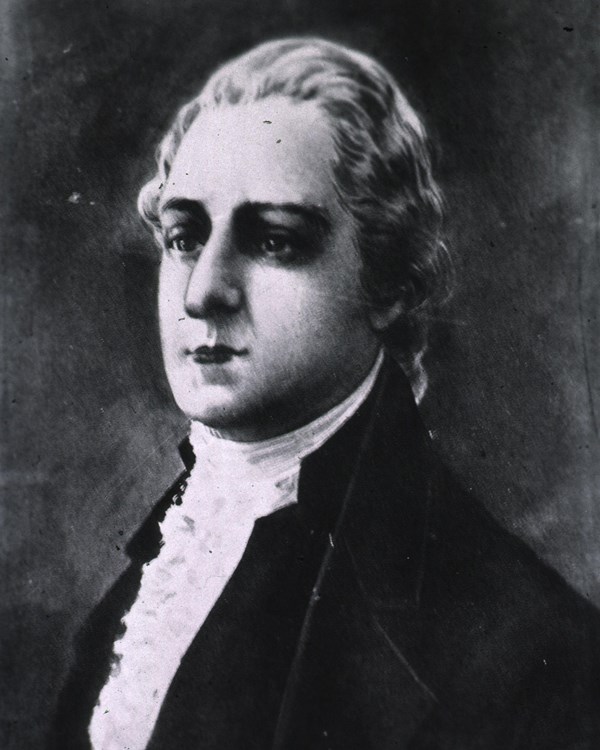Last updated: February 20, 2025
Person
Benjamin Church

National Library of Medicine
The life of Dr. Benjamin Church Jr. reflects the complex and often contradictory nature of the American Revolution. A central figure in the early years of the American Revolution, his story shows that the motives and actions of individuals during this period were not always straightforward.
Born in 1734 in Newport, Rhode Island, Church came from a prominent family and completed his education at Harvard College by the age of 20. After graduation, he became a medical apprentice in Boston. In 1757, he served as a physician on the Massachusetts Bay Colony sloop of war, Prince of Wales. He left this position after five months to continue his medical studies in London. In 1759, he met and married Sarah Miller before returning to Boston, where he became a respected physician and citizen.
As tensions escalated between the colonies and Great Britain during the 1760s and 1770s, Church actively supported the American Revolution. He was vocal in his criticism of Boston ministers believed to be Tories, as well as the 1765 Stamp Act through his poems and political satire. As a member of the Sons of Liberty, Church aligned himself with leaders like John Adams, Samuel Adams, and Dr. Joseph Warren. He gained recognition for his involvement after the Boston Massacre in 1770, particularly for examining Crispus Attucks' body and delivering an influential speech in 1773. His political role expanded when he joined the Massachusetts Provincial Congress in 1774.
In June 1775, Church arrived at the Pennsylvania State House in Philadelphia, on behalf of the Massachusetts Provincial Congress, to petition the Continental Congress to take command of the militia laying siege to Boston. In July, the Continental Congress appointed Church the first Director General of the newly established Army Medical Department, effectively becoming the first Surgeon General of the United States.
However, unknown to many, he was secretly communicating with British General Thomas Gage.
This betrayal was exposed when a coded letter from Church to Gage was intercepted. The contents of this letter, once decoded, revealed that Church was sharing sensitive military information, which included the locations and activities of Continental forces. Church admitted to writing the coded letter but claimed he did it to get intelligence from the British army for the Continental Army. Historians in the 1930s discovered extensive communication from Church in General Gage's files, indicating a deeper involvement with the British army, though this evidence was not known to the patriots at the time.
General George Washington and other American leaders were faced with a significant challenge upon discovering Church's espionage.
Church was court-martialed at Washington’s headquarters in Cambridge and removed from his position. He was initially confined in the Penelope Vassall House, then imprisoned in Norwich, Connecticut on the resolution of the Continental Congress, and later placed under house arrest in Massachusetts. In 1778, he was named in the Massachusetts Banishment Act, which led to his departure from the United States. His final journey was to the Caribbean, but the ship he was on was lost at sea.
Historians have long debated Church’s motivations. Some suggest he might have been prompted by financial needs or that he had attempted to act as a mediator between the patriots and the Crown. Other historians argue that due to his family ties–his wife being British and his brother-in-law a Tory printer–Church was perhaps a loyalist from the beginning.
